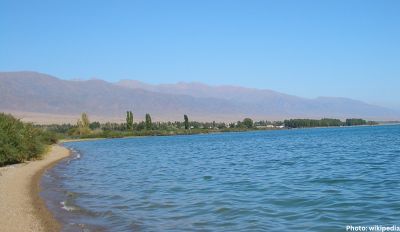Newswise — The accepted view of Mars is red rocks and craters as far as the eye can see. That’s much what scientists expected when they landed the rover Perseverance in the Jezero Crater, a spot chosen partly for the crater’s history as a lake and as part of a rich river system, back when Mars had liquid water, air and a magnetic field.
What the rover found once on the ground was startling: Rather than the expected sedimentary rocks – washed in by rivers and accumulated on the lake bottom – many of the rocks are volcanic in nature. Specifically, they are composed of large grains of olivine, the muddier less-gemlike version of peridot that tints so many of Hawaii’s beaches dark green.
Planetary scientists Roger Wiens, professor of earth, atmospheric, and planetary sciences, and Briony Horgan, associate professor of earth, atmospheric, and planetary sciences, in Purdue’s College of Science, were instrumental in the discovery and analysis of this data, recently published in a suite of papers in the journals Science and Science Advances.
Wiens led the design and construction of Perseverance’s SuperCam, which helps analyze the rock samples and determine their type and origin. Horgan helped select Jezero Crater as the rover’s landing site and now uses the Mastcam-Z cameras on Perseverance to put its discoveries into geological context.
“We started to realize that these layered igneous rocks we were seeing look different from the igneous rocks we have these days on Earth,” Wiens said. “They’re very like igneous rocks on Earth early in its existence.”
The rocks and lava the rover is examining on Mars are nearly 4 billion years old. Rocks that old exist on Earth but are incredibly weathered and beaten, thanks to Earth’s active tectonic plates as well as the weathering effects of billions of years of wind, water and life. On Mars, these rocks are pristine and much easier to analyze and study.
Understanding the rocks on Mars, their evolution and history, and what they reveal about the history of planetary conditions on Mars helps researchers understand how life may have arisen on Mars and how that compares with early life and conditions on ancient Earth.
“One of the reasons we don’t have a great understanding of where and when life first evolved on Earth is because those rocks are mostly gone, so it’s really hard to reconstruct what ancient environments on Earth were like,” Horgan said. “The rocks Perseverance is roving over in Jezero have more or less just been sitting at the surface for billions of years, waiting for us to come look at them. That’s one of the reasons that Mars is an important laboratory for understanding the early solar system.”
Scientists can use conditions on early Mars to help extrapolate the environment and conditions on Earth at the same time when life was beginning to arise. Understanding how, and under what conditions, life began will help scientists know where to look for it on other planets and moons, as well as lead to a deeper understanding of biological processes here on Earth.
The search for life is one of Perseverance’s main goals and one of the reasons it landed in Jezero Crater in the first place. Discovering the potential for habitable environments in something as uninhabitable as Jezero Crater’s aged lava flows raises hopes for what lies in the sedimentary rocks the mission is examining now.
“We’re excited to see even better results about organics and ancient habitable environments,” Horgan said. “I think it’s really setting the stage that Mars is this watery, habitable place, and all the samples we’re getting back are going to help us understand the history of ancient microbial life on Mars.”
The equipment and innovative instruments are helping the rover carry out its mission in a way no other rover yet has, emphasizing the need to land on the planet so scientists can examine and understand what’s really going on.
“From orbit, we looked at these rocks and said, ‘Oh, they have beautiful layers!’ So we thought they were sedimentary rocks,” Horgan said. “And it wasn’t until we were very close up and looked at them, at the millimeter scale, that we understood that these are not sedimentary rocks. They’re actually ancient lava. It was a huge moment when we figured that out on the ground, and it really illustrated why we need this kind of exploration. The tools we have on the rover are vital because it was impossible to understand the origin of these rocks until we got up close and used all our amazing microscopic instruments to look at them.”
The search for life is one of Perseverance’s main goals and one of the reasons it landed in Jezero Crater in the first place. Discovering the potential for habitable environments in something as uninhabitable as Jezero Crater’s aged lava flows raises hopes for what lies in the sedimentary rocks the mission is examining now.
“We’re excited to see even better results about organics and ancient habitable environments,” Horgan said. “I think it’s really setting the stage that Mars is this watery, habitable place, and all the samples we’re getting back are going to help us understand the history of ancient microbial life on Mars.”
The equipment and innovative instruments are helping the rover carry out its mission in a way no other rover yet has, emphasizing the need to land on the planet so scientists can examine and understand what’s really going on.
“From orbit, we looked at these rocks and said, ‘Oh, they have beautiful layers!’ So we thought they were sedimentary rocks,” Horgan said. “And it wasn’t until we were very close up and looked at them, at the millimeter scale, that we understood that these are not sedimentary rocks. They’re actually ancient lava. It was a huge moment when we figured that out on the ground, and it really illustrated why we need this kind of exploration. The tools we have on the rover are vital because it was impossible to understand the origin of these rocks until we got up close and used all our amazing microscopic instruments to look at them.”
Newswise — Scientists on NASA’s Perseverance mission made a surprising discovery about the composition of rock in Jezero Crater, one that will help them get a better idea of when water existed on Mars, and ultimately, help them understand if the red planet was ever habitable to microbial life.
“The SuperCam instrument suite of remote chemical and mineralogical tools on the Perseverance rover has made some exciting new detailed observations regarding Jezero Crater’s history that could not be fully understood before landing,” said Sam Clegg, deputy principal investigator for SuperCam. “This exciting new data will really help us better understand when the crater held water, and it also gives us insight into Mars’ climate history.”
The new research, published today (Aug. 25) in Science Advances, shows that Jezero Crater is largely made up of igneous rock, rather than sedimentary rock.
The crater where Perseverance landed in 2021 held water billions of years ago. For that reason, scientists predicted that rock in the area would be sedimentary, formed over time from settled mud, which would be the case for lakebeds on Earth. But to their surprise, they found that rock in Jezero is igneous, which is formed by volcanic magma.
Igneous rock is easier to date and could give researchers a more accurate way to estimate when Mars had water.
The rock analysis was done by SuperCam, a Los Alamos National Laboratory-designed instrument. SuperCam uses a focused infrared laser beam to remove dust and material from rock surfaces in a technique called laser-induced breakdown spectroscopy (LIBS). The energy burst from each five-nanosecond pulse creates a flash; its optical spectrum (specific colors) reveals the elemental chemistry of targets up to about 25 feet away.
“Finding these igneous rocks in the bed of an ancient lake on Mars was quite a surprise. One would have expected lakebed sediments, but it shows that Mars’ history is more complicated than expected, including lava flows in this ancient site,” said Roger Wiens, principal investigator on the SuperCam instrument.











